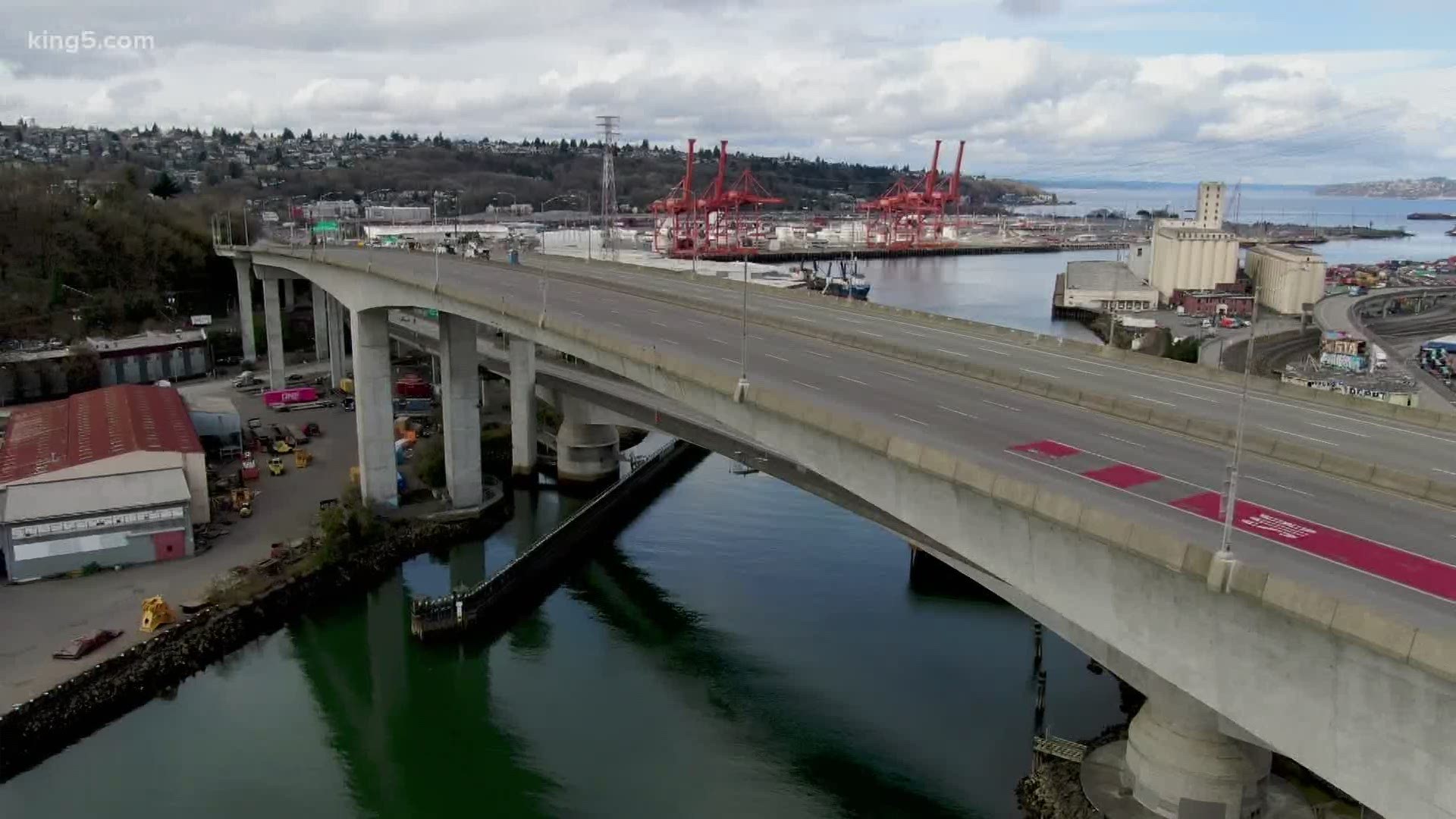SEATTLE — More than 1,800 people joined a live virtual town hall meeting with Seattle city officials on Wednesday to learn what’s next for the stricken West Seattle high bridge.
There were more than a thousand questions. The Seattle Department of Transportation (SDOT) didn’t have many firm answers.
The high-level West Seattle Bridge was closed on March 23. The city had already been monitoring the cracks on the bridge, but they started growing rapidly.
Cracks in the concrete structure supporting roadway continue to grow. The bridge can no longer safely support traffic and will be closed at least until 2022, SDOT officials said.
The city said its priority right now is stabilizing the damaged section of the bridge, to slow or stop the growth of cracks, calling it a matter of public safety.
City officials are worried if the damage gets worse, the bridge could collapse, but they said there is no imminent danger of that happening.
That stabilization work must happen before they can get to repairs — if repairs can even be made.
Progress on a design plan for repairs is at “zero percent,” city officials said.
SDOT said nothing right now can replace the capacity of the high bridge, which carried an average of 100,000 vehicles on a normal day, pre-coronavirus pandemic.
The current detours and other bridges simply cannot handle all those cars, buses and trucks once traffic returns to normal levels, SDOT said.
“It’s really not an option for everyone who used to use their cars to go to and from West Seattle to continue to do so,” said Heather Marx, SDOT director of downtown mobility.
She said people should start planning alternatives, like taking the bus, biking or using the water taxi.
During the hour-and-a-half town hall, frustrated West Seattle residents asked a range of questions.
People who just bought homes in West Seattle worried about property values and wondered if they could get a tax break. That would be up to the King County Assessor, who did not participate in the town hall.
A physician who said he is on the front lines of the coronavirus response said it is taking him three times as long to get to work and said he was terrified of what would happen when road congestion returns.
Many drivers wondered why they couldn’t use the lower portion of the bridge, which is currently reserved for emergency vehicles and buses.
Marx repeatedly pushed back on the idea that others should be able to use the lower bridge, saying that route was not designed to handle a surge of traffic, and it must be reserved for emergency responders.
A couple expecting a baby worried they’d have to take a detour to get to the delivery room. They were told they'd be able to use the lower bridge in that kind of urgent situation, Marx said.
Another viewer asked if the city might work with Sound Transit to build a new bridge as part of a light rail expansion to West Seattle.
“Nothing is off the table,” said SDOT Director Sam Zimbabwe.
In an interview with KING 5’s Chris Daniels Wednesday, Seattle Mayor Jenny Durkan did not offer a clear path for funding a replacement bridge but said talks are underway.
“We are going to be looking at every possible outlet to see how we can get this done as quickly as possible with as least of a hit on the taxpayers of Seattle,” she said.

